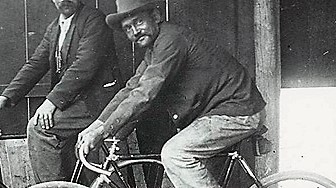Boer War
On 31 May 2017, His Excellency, General the Honourable Sir Peter Cosgrove AK MC (Retd) Governor-General of the Commonwealth of Australia, dedicated a memorial to those Australians who volunteered and fought in the nation’s first war. Like most wars our nation has been involved in it, was in a place far away. An economic war with little impact on Australia; nonetheless a conflict our democratically elected colonial then national governments called for our citizens to volunteer for. Volunteer they did, between 16,000 and 21,000 took part, between 500 and 1,000 paid the ultimate price.
This war was noted for a number of innovations. It was the first war where accurate to 2,000 metres Mauser rifles (Boer side only), with smokeless ammunition, and antiseptic surgery were employed. Combatants could be taken out at long range without their enemies working out where the shots came from, soldiers had a much better chance of surviving wounds.
With one side, the British, having force size definitely on their side, the war soon transitioned from a series of set piece battles to a guerrilla fight across a wide country. The barbed wire and entrenchments that would stifle mobility were 15 years in the future; the combat was one of mobility by a large force (the British) against a better armed (Mausers of varying types almost all using smokeless cartridges) Boers vs Martini Henry and .303 Lee Metford (Brits), some with smokeless cartridges and skilful enemy (the Boers).
Horse mounted soldiers, who used their horses for mobility but fought on foot, were the most combat capable arm. Cavalry units still carried their shock weapons, but for the most part left their lances and swords with their horses, and fought on foot with their rifles; infantry units were quickly mounted. Australian soldiers with their horsemanship and shooting skills honed from infancy in a wide land where shooting was both a sport and a profession were very effective. TIMELINE: Click Here
The Anglo-Boer War (1899-1902) An Australian Perspective
The Anglo-Boer War was by far the biggest military campaign fought by the British Empire between the Battle of Waterloo in 1815 when Wellington subdued Nalopeon’s Army, and the Great War of 1914-1918. It was the biggest army to leave Britain’s shores since Henry V left for France to fight at Agincourt in 1415.
Despite the terrible privation on occasions for both the military and civilian populations, it was one of the last of what we might term, the ‘Romantic Wars’, pitting a pioneering people, fighting to establish their independence, against the might of the British Empire, which at that time was in Queen Victoria’s England, the high noon of a reign unsurpassed. Continue Reading
Australian Soldiers of the Boer War
A comprehensive list of men and women who represented their country fighting in the Boer War in South Africa. Click Here
Aboriginal Soldier – JOHN SEARLE

John Searle
Private John Searle, one of the few Australian Aboriginal soldiers recorded as serving in the Boer War. Peter Bakker has spent the past five years researching and documenting the contribution of indigenous Australians in past conflicts.
During that time, the number of aboriginal soldiers recognised by the Australian War Memorial as having served the nation has surged. “Up until ten years ago the usual quotation, even from the Australian War Memorial, was that there were about 300 aborigines who served in the First World War – we know now though, it’s around 1000,” the south-west Victorian school teacher and historian said.
Peter Bakker says he now has evidence that indigenous Australia’s links to international conflicts go as far back as the Boer War. Mr Bakker has made contact with relatives of John Robert Searle, a Western Australian man who enlisted and served with the Australian army in the Boer War and will hand his findings to the Australian War Memorial.
Return to MEN AT WAR Page
Return to HOME Page
Visit the BOER WAR Memorial Page
